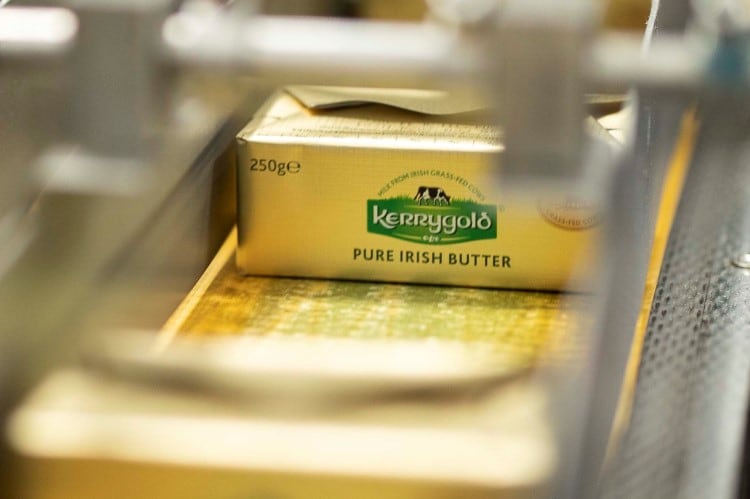The US non-profit trade body’s consumer survey revealed that 81% of shoppers now cook more than half of their meals at home, highlighting a sustainable shift in consumer habits following the COVID-19 pandemic.
Since its peak in 2020 and 2021, cooking at home decreased slightly, but 64% of Americans are continuing to do so to save money and control their budget, the NFRA stated.
The non-profit organization surveyed more than 12,000 US consumers and analyzed news and social media content to identify and understand consumer perspectives around frozen and refrigerated foods over the past 18 months up to mid-August 2023.
It was the largest research undertaking from the NFRA on behalf of the frozen and refrigerated food industry, said president and CEO Jeff Rumachik.
Key trends identified from the survey include a shift to healthier eating, which includes home cooking. Taste or flavor (66%), quality of the groceries (65%) and healthiness (49%) determine what consumers are putting in their carts, the trade association said. Meanwhile, nearly 3 in 5 shoppers (59%) state they began cooking at home using precut frozen fruits and vegetables to save on prep time, or using frozen main dishes that are easier to prepare while making their own side dishes, or using frozen fruit in recipes for smoothies and other treats sometime within the past three years.
According to the report, products in the dairy aisles in particular have the opportunity to stand out to consumers looking to add something new to the table or searching for ingredients for home-cooked meals.
Around 1 in 6 shoppers state they shop at their favorite grocery store because they like its range of products in the dairy aisle.
At the same time, 75% of shoppers reported that they always bought milk during their main shopping trips or were always on the lookout for offer on milk when shopping, with 26% stating that they were likely to buy more milk over the next 12 months.
Interest in dairy alternatives was also examined, with consumers commonly incorporating alt dairy purchased from the dairy aisle. Among dairy milk buyers, 68% stated they were always on the lookout for deals on milk alternatives or flavored milk, or admitted to purchasing milk alternatives/ flavored milk occasionally or frequently when shopping in the dairy aisle.
Based on the survey, the top dairy aisle purchases aside from milk were eggs (51%) , cheese (50%), butter and spreads (46%), coffee creamers (31%), yogurt/kefir/skyr (31%) and sour cream/cottage cheese/cream cheese (30%).
Dairy products are also frequently used as enhancements by consumers who rely on frozen foods to prepare their main dishes, the non-profit organization said. “The top dairy products on consumers’ deal-seeking radar tend to share a common trait - they are more often supplemental; or, rather, ingredients commonly used in combination with others in a recipe.”
Alongside dairy, dairy alternatives are increasingly being purchased from the same aisle, the organization noted.
“Consumer preference for dairy or dairy alternatives is rarely exclusive; instead, our data, as well as recent industry reports (McKinsey, 2023) suggest consumers are increasingly buying dairy and dairy alternatives together,” NFRA commented.
“Further, evolving preferences in flavors and taste contribute toward demand for variety in the dairy aisle (McKinsey, 2023).
“The focus on dairy alternatives should be less about catering to vegan and lactose intolerant diets and more about the possible range of variety and flavors different dairy and dairy alternatives offer to consumers.”
Shoppers are also noticing the variety of frozen products is growing, with 50% of those surveyed stating that the choice of frozen products had increased over the past couple of years. Gen Z notice this trend the least, suggesting there’s an opportunity for manufacturers and retailers to target this demographic in order to drive frozen product sales, the NFRA stated.
When it comes to frozen dairy products, 1 in 5 consumers said they were likely to buy more non-dairy ice cream or frozen yogurt over the next 12 months, with Gen Z and Millennials driving this trend the most, according to the survey. “Gen Z values engagement more than product variety,” the NFRA stated. “Manufacturers can drive engagement with these younger consumers via interactive and educational content.”
Other insights from the report show that technology and social media are having a major influence on how and what Americans eat. “Consumers are adopting online grocery shopping and looking to social media for cooking inspiration to make eating at home more convenient or to fill in the gaps when they don't have the skillset for making a recipe,” NFRA stated.
According to the findings, 54% of shoppers are learning about food and cooking through TikTok and YouTube, while a third (33%) prefer to shop for groceries online because automated recommended purchases help ensure that they never forget the ingredients they need for recipes.
Shoppers also remain budget-conscious by placing greater value on saving money by dining in and buying frozen and refrigerated ingredients. Value for money (66%), taste or flavor (66%) and quality (65%) are the most influential factors that shape purchasing decisions, the survey found, while 62% of respondents said it was too expensive to eat out as often as they would like to and 47% find frozen is often a better value for money than fresh products.
The full report can be accessed here.




